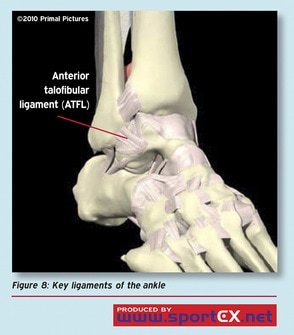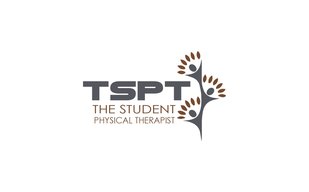- Home
- About Us
- TSPT Academy
- Online Courses
-
Resources
- Newsletter
- Business Minded Sports Physio Podcast
- Day in the Life of a Sports PT
- Residency Corner
-
Special Tests
>
-
Cervical Spine
>
- Alar Ligament Test
- Bakody's Sign
- Cervical Distraction Test
- Cervical Rotation Lateral Flexion Test
- Craniocervical Flexion Test (CCFT)
- Deep Neck Flexor Endurance Test
- Posterior-Anterior Segmental Mobility
- Segmental Mobility
- Sharp-Purser Test
- Spurling's Maneuver
- Transverse Ligament Test
- ULNT - Median
- ULNT - Radial
- ULNT - Ulnar
- Vertebral Artery Test
- Thoracic Spine >
-
Lumbar Spine/Sacroiliac Joint
>
- Active Sit-Up Test
- Alternate Gillet Test
- Crossed Straight Leg Raise Test
- Extensor Endurance Test
- FABER Test
- Fortin's Sign
- Gaenslen Test
- Gillet Test
- Gower's Sign
- Lumbar Quadrant Test
- POSH Test
- Posteroanterior Mobility
- Prone Knee Bend Test
- Prone Instability Test
- Resisted Abduction Test
- Sacral Clearing Test
- Seated Forward Flexion Test
- SIJ Compression/Distraction Test
- Slump Test
- Sphinx Test
- Spine Rotators & Multifidus Test
- Squish Test
- Standing Forward Flexion Test
- Straight Leg Raise Test
- Supine to Long Sit Test
-
Shoulder
>
- Active Compression Test
- Anterior Apprehension
- Biceps Load Test II
- Drop Arm Sign
- External Rotation Lag Sign
- Hawkins-Kennedy Impingement Sign
- Horizontal Adduction Test
- Internal Rotation Lag Sign
- Jobe Test
- Ludington's Test
- Neer Test
- Painful Arc Sign
- Pronated Load Test
- Resisted Supination External Rotation Test
- Speed's Test
- Posterior Apprehension
- Sulcus Sign
- Thoracic Outlet Tests >
- Yergason's Test
- Elbow >
- Wrist/Hand >
- Hip >
- Knee >
- Foot/Ankle >
-
Cervical Spine
>
- I want Financial Freedom
- I want Professional Growth
- I want Clinical Mastery
 Lateral ankle sprains are among some of the most common sports medicine injuries each year. We often see this injury with basketball players as we did recently with Kawhi Leonard in the NBA playoffs. However more often than not, unless its a grade III sprain, we can get our athletes back on the court or field pretty quickly. Yet it seems like this is an injury that is often prolonged because of a few critical mistakes early on in rehabilitation. Let's talk about what you can do to quickly get your athletes back in the game. Critical Points to Consider There are a few questions you have to ask yourself when an athlete comes in to see you. First, do they have a broken ankle? Refer to the Ottawa Ankle Rules when considering if they need an X-ray. More often than not they don't if they can walk and are not tender to touch over bony areas. Second, do they have a high ankle sprain? While less common, this does occur. Be sure to take a through subjective report to understand the mechanism of injury and previous injury history. The last thing to be sure to consider is what the athlete's practice and game schedule is like. If you can get your athlete in to see you everyday for the first few days you can do a lot of good right away to get things moving in the right direction. Treatment The most important thing is to begin bringing down the swelling. Contrast baths, manual flushing, and elevation of the leg is typically very effective early on. However, one mistake I often see is therapists do not tape or compress the athlete after treatment to continue to improve the swelling. My favorite technique that I learned is a horseshoe technique that is great at improving swelling. Another technique you can use is squid taping with K-tape which is also effective. Lastly, if you don't have access to tape I would suggest having your athlete pick up a compressive sleeve. The next part of rehabilitation is the ROM and strengthening part. Range of motion should start immediately as the ankle will stiffen up from the pain and swelling. Working on ROM exercises such as ankle circles, ankle pumps, and calf stretches in the beginning are fine but as the pain tolerance improves using half kneeling ankle mobilizations against a wall or manual techniques can make big differences. As far as strengthening goes, I typically like to start manually resisted ankle strengthening quite early as I can control the range of these strengthening exercises. Typically I will start by having my athlete match my pressure so it is more of an isometric contraction but will gradually open up the range. Other exercises include towel scrunches, marbles, ankle theraband, calf raises, and lots of core and glute retraining. Many research studies have shown the importance of strengthening glutes after ankle sprains and quite frankly it just makes sense to keep the body stronger above. In addition, improving work capacity early on can make the transition back to the court/field much easier. I like to get my athletes on the bike as soon as possible. If they cannot tolerate a bike I will get them going on the upper extremity bike. Lastly, working on proprioceptive balance exercises early on is important for furthering rehab. Start with just single leg balance and progress to unstable surfaces and using arm and leg drivers to change planes of motion. Summary 1. Control swelling: - Contrast Baths, Manual flushing, Elevation of leg, compression sleeve, K-tape, Horseshoe tape technique (favorite) 2. Range of Motion: - Ankle pumps, Ankle circles, Baps board, Calf stretching (towel stretch, against wall, slantboard), Half kneeling ankle mobilizations against wall, Manual mobilizations, Bike for early movement or upper body bike to keep them in shape 3. Strengthening: - Ankle/Foot: Manually resisted 4 way ankle strengthening to ankle theraband to calf raises, towel scrunches, marbles. Glute and core retraining. 4. Balance: - Single leg balance, SL balance w/ eyes closed (stay close by), SL balance on airex, SL balance with arm and/or leg drivers to challenge further planes of motion 5. Work Capacity: - Get them on the bike or upper extremity bike (if you have access to one) ASAP to keep them moving and in shape. AlterG is great for retraining gait and running - Dr. Brian Schwabe, PT, DPT, SCS, CSCS *Check out the Insider Access video on my return to sport progression & testing for ankle sprains*
2 Comments
10/13/2023 05:09:18 am
Recovering from a lateral ankle sprain is crucial for athletes, especially those aiming to return to action swiftly. To expedite the healing process, a combination of RICE (Rest, Ice, Compression, Elevation) therapy, followed by targeted physical therapy, is essential. Implementing proprioceptive exercises and balance training helps rebuild stability. Additionally, a progressive rehabilitation plan, incorporating the principles of gradual load and functional movements, can fast-track recovery. It's essential to monitor the athlete's progress, ensuring a safe return to play. Just as fighters like Makhachev vs Volkanovski adapt their strategies in the ring, athletes must adapt their recovery plans to regain strength and agility effectively.
Reply
To swiftly get your athletes playing, start by establishing clear communication channels. Provide them with essential information, including schedules, rules, and strategies. Encourage teamwork and foster a positive atmosphere to enhance their performance. Utilize effective training techniques tailored to individual strengths and weaknesses. Incorporate motivational tactics to keep morale high. Additionally, ensure access to proper facilities and equipment for optimal training. Lastly, maintain open dialogue with your athletes to address any concerns or obstacles they may face. By implementing these strategies alongside consistent support and guidance, your athletes will be ready to excel on the field. Remember to visit "레부카지노 주소" for additional resources and support.
Reply
Leave a Reply. |
Dr. Brian Schwabe's NEW Book in partner with PaleoHacks!
Learn residency-level content on our
Insider Access pages We value quality PT education & CEU's. Click the MedBridge logo below for TSPT savings!Archives
July 2019
Categories
All
|







 RSS Feed
RSS Feed